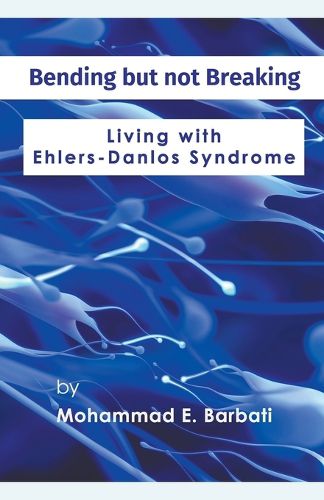Readings Newsletter
Become a Readings Member to make your shopping experience even easier.
Sign in or sign up for free!
You’re not far away from qualifying for FREE standard shipping within Australia
You’ve qualified for FREE standard shipping within Australia
The cart is loading…






This title is printed to order. This book may have been self-published. If so, we cannot guarantee the quality of the content. In the main most books will have gone through the editing process however some may not. We therefore suggest that you be aware of this before ordering this book. If in doubt check either the author or publisher’s details as we are unable to accept any returns unless they are faulty. Please contact us if you have any questions.
Bending But Not Breaking: Living with Ehlers-Danlos Syndrome is a comprehensive guide to understanding and managing Ehlers-Danlos Syndrome (EDS) and related connective tissue disorders. Written by Dr. Mohammad E. Barbati, a consultant vascular and endovascular surgeon, this book offers professional medical insights alongside empathetic guidance for those living with these challenging conditions.
The book opens with an introduction defining EDS, a group of inherited disorders affecting the connective tissues that provide structure and support throughout the body. It provides an overview of EDS symptoms such as joint hypermobility, fragile skin, and cardiovascular complications.
The next section explores connective tissue disorders more broadly, distinguishing between inherited conditions like EDS and acquired disorders like lupus. Detailed chapters follow on the classification and subtypes of EDS, including the genetic basis and diagnostic criteria for categories like classical, hypermobile, vascular, and more.
Symptoms and clinical features of each subtype are thoroughly explained, providing specificity to enhance diagnosis and management. Guidance is then provided on diagnosing EDS through clinical assessment, genetic testing, and using diagnostic criteria while avoiding false positives or negatives.
Extensive coverage is dedicated to treatment and management strategies for EDS, including physical therapy, pain management, various surgical interventions, and psychological support. Examples include proprioceptive exercises, counseling, and procedures like spinal fusion or corneal transplantation. Emphasis is placed on a multidisciplinary approach to improve quality of life.
Overall, Bending But Not Breaking serves as an excellent guidebook for understanding the complexities of living with EDS or related conditions. Dr. Barbati's expertise combined with compassion makes this book an invaluable resource for patients, families, and healthcare professionals seeking to better comprehend and manage these disorders.
$9.00 standard shipping within Australia
FREE standard shipping within Australia for orders over $100.00
Express & International shipping calculated at checkout
This title is printed to order. This book may have been self-published. If so, we cannot guarantee the quality of the content. In the main most books will have gone through the editing process however some may not. We therefore suggest that you be aware of this before ordering this book. If in doubt check either the author or publisher’s details as we are unable to accept any returns unless they are faulty. Please contact us if you have any questions.
Bending But Not Breaking: Living with Ehlers-Danlos Syndrome is a comprehensive guide to understanding and managing Ehlers-Danlos Syndrome (EDS) and related connective tissue disorders. Written by Dr. Mohammad E. Barbati, a consultant vascular and endovascular surgeon, this book offers professional medical insights alongside empathetic guidance for those living with these challenging conditions.
The book opens with an introduction defining EDS, a group of inherited disorders affecting the connective tissues that provide structure and support throughout the body. It provides an overview of EDS symptoms such as joint hypermobility, fragile skin, and cardiovascular complications.
The next section explores connective tissue disorders more broadly, distinguishing between inherited conditions like EDS and acquired disorders like lupus. Detailed chapters follow on the classification and subtypes of EDS, including the genetic basis and diagnostic criteria for categories like classical, hypermobile, vascular, and more.
Symptoms and clinical features of each subtype are thoroughly explained, providing specificity to enhance diagnosis and management. Guidance is then provided on diagnosing EDS through clinical assessment, genetic testing, and using diagnostic criteria while avoiding false positives or negatives.
Extensive coverage is dedicated to treatment and management strategies for EDS, including physical therapy, pain management, various surgical interventions, and psychological support. Examples include proprioceptive exercises, counseling, and procedures like spinal fusion or corneal transplantation. Emphasis is placed on a multidisciplinary approach to improve quality of life.
Overall, Bending But Not Breaking serves as an excellent guidebook for understanding the complexities of living with EDS or related conditions. Dr. Barbati's expertise combined with compassion makes this book an invaluable resource for patients, families, and healthcare professionals seeking to better comprehend and manage these disorders.